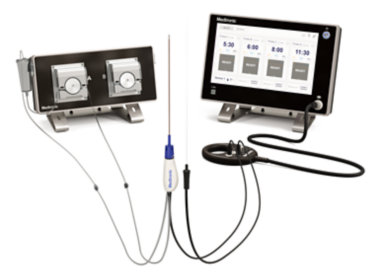Description
Radiofrequency ablation (RFA) systems have emerged as a pivotal technology in the realm of minimally invasive medical procedures. RFA utilizes high-frequency electrical currents to generate heat, effectively targeting and destroying abnormal tissue, such as tumors or arrhythmic tissue in the heart. One of the key advantages of RFA is its ability to provide localized treatment, thereby minimizing damage to surrounding healthy tissues. This specificity not only enhances patient recovery times but also reduces the risk of complications commonly associated with traditional surgical methods.
The technological advancements in RFA systems have significantly improved their efficacy and safety profiles. Modern systems incorporate sophisticated imaging techniques, such as ultrasound or fluoroscopy, guiding the physician in real-time to ensure accurate placement of the ablation catheter. Additionally, newer systems often feature feedback mechanisms that monitor tissue temperature and impedance, enabling dynamic adjustments during the procedure. This level of precision is crucial, particularly in complex anatomies or when dealing with lesions in close proximity to vital structures.
Radiofrequency ablation is widely used across various medical fields, including oncology, cardiology, and pain management. In oncology, for instance, RFA has become a standard procedure for treating small primary and metastatic tumors, especially in organs like the liver and lungs. In cardiology, it is employed to correct arrhythmias by modifying the electrical pathways in the heart. Furthermore, the application of RFA in pain management has provided relief for patients suffering from chronic pain conditions, giving them a renewed quality of life.
Despite its numerous benefits, RFA is not without limitations. The effectiveness of the procedure can vary depending on factors such as tumor size, location, and the overall health of the patient. Additionally, there is a potential for recurrence of the targeted lesions, necessitating ongoing monitoring and, in some cases, repeat treatments. Nevertheless, as technology continues to evolve, radiofrequency ablation systems are likely to become even more refined, further establishing their role as a cornerstone of modern medical therapy.











